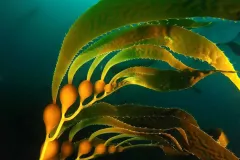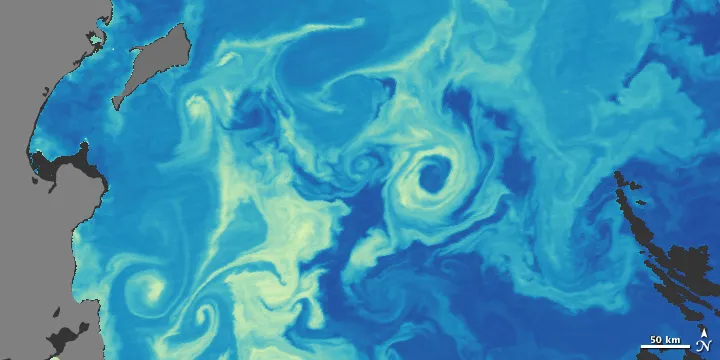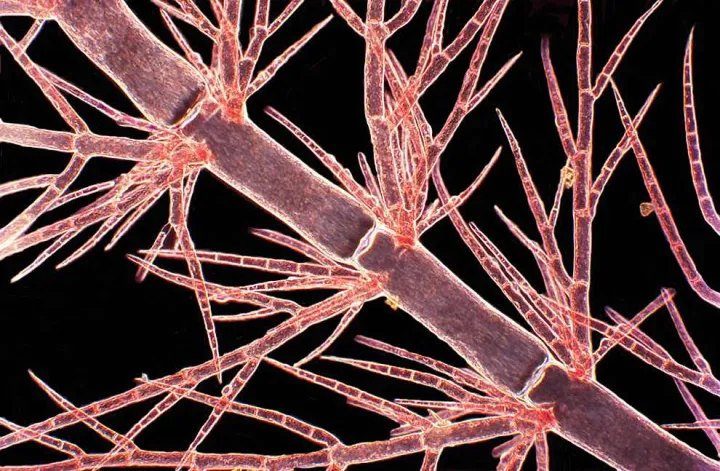With Every Breath You Take, Thank the Ocean

When was the last time you thought about your breathing? Take a breath right now and think about it. You breathe because you need oxygen, a gas which makes up 21 percent of the Earth’s atmosphere. All that oxygen has to come from somewhere. You might already know that it comes from photosynthetic organisms like plants. But did you know that most of the oxygen you breathe comes from organisms in the ocean?
That’s right—more than half of the oxygen you breathe comes from marine photosynthesizers, like phytoplankton and seaweed. Both use carbon dioxide, water and energy from the sun to make food for themselves, releasing oxygen in the process. In other words, they photosynthesize. And they do it in the ocean.
Photosynthesizers have been in the ocean for a long time. Land plants start appearing in the fossil record 470 million years ago, before dinosaurs roamed the earth. But the ocean was producing oxygen for billions of years before that. The oldest known fossil is from a marine cyanobacterium, a tiny-blue green photosynthesizer that was releasing oxygen 3.5 billion years ago. In a way, we owe the ocean for all of the oxygen that comes from land plants as well, because land plants evolved from green marine algae. If there were a race to put oxygen in the atmosphere, the ocean would have one heck of a head start.
But the ocean’s long history of photosynthesis would matter very little to us if not for the photosynthesizers that live in it today. Of these, the most impressive is another cyanobacterium called Prochlorococcus. It is estimated to be more abundant than any other photosynthesizer on the planet, and to be responsible for producing 20 percent of the oxygen in the atmosphere. One in every five breaths you take, you owe to Prochlorococcus. Perhaps as amazing is the fact that scientists only discovered this super-abundant photosynthesizer in 1988—less than thirty years ago!
Another of the ocean’s photosynthesizers is impressive for a different reason. Recall that sunlight is necessary for photosynthesis. That means all marine photosynthesizers have to live in what scientists call the “photic zone”—the layer at the top of the ocean that is illuminated by sunlight. The photic zone extends down to about 656 feet (200 meters) below the surface of the ocean, but it’s difficult to put a depth limit on it, because photosynthesizers keep taking photosynthesis down farther than we thought possible. Eight hundred and eighty-six feet below the ocean’s surface, you would barely be able to see light. But a type of red algae called Corallinales nevertheless photosynthesizes at that depth. The red color of Corallinales comes from a pigment which enables it to absorb blue and green light, which is just about the only kind of light that manages to filter down to the improbable depths at which Corallinales lives. This photosynthesizer produces oxygen despite only being able to access the tiniest fraction of sunlight.
Whether they evolved the earliest, photosynthesize the most, or dwell the deepest, marine photosynthesizers are indispensable to our survival. If they weren’t around, we wouldn’t be breathing. So, once in a while, take a moment to remember the ocean and its photosynthesizers. They’re helping you out with every breath you take.



